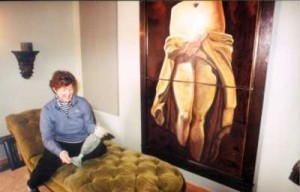Review by Allen Best
Colorado – February 2004 – Colorado Central Magazine
divide: The University of Colorado’s Journal of Writing and Ideas
(ISSN 1542-6424)
Telephone: 303-735-4669
Web: www.colorado.edu/journals/divide/
I CANNOT BEGIN to describe how tired I get of formulaic writing and publishing. Newspapers, I suppose, are the worst, with their inverted pyramid leads and “nut” paragraphs (invariably introduced with “but”) that seek to summarize the tension in 25 words or less. Newspaper writing reminds me of a plastic grocery-store sack trying to contain a five-pound can of coffee and 10-pound sack of flour, plus bananas, lettuce, and limes, all of it topped off with a box of Saltine crackers.
Adding to the problem is what I call the 12- to 14-inch rule. At least in the daily newspapers that dominate the markets where I have toiled a majority of my years, the guiding rule is that stories, whether they deserve 2 inches or 50 inches, are to be contained within 12 to 14 inches. That is presumed to be the attention span of readers, as well as the skill level of the writers.
Magazines, in some ways, are even worse. The conclusions aren’t summarized in some bulging lead, but the stories are woefully predictable. Whether the topic is business or environment, their scripts are well-worn. Know what I call a magazine rack? A pack of dogmas.
Myself, I just love reading pieces where I set out with the writers, not knowing where they will take me, but trusting that I’ll enjoy the journey as well as the destination. Based on the first issue of a planned twice-annual publication from the University of Colorado at Boulder, I expect many good trips ahead from the magazine called divide.
Released this past fall, the first issue of divide is devoted to a reliable topic, “Death of the New West?” The first story I read was a reminiscence about growing up in semi-rural Arvada in the 1960s and ’70s, not far from Rocky Flats, where plutonium triggers were manufactured for the Cold War arsenal. The story begins “In 1968, my parents bought a house.” I don’t think Rocky Flats is mentioned for close to 1,000 words.
Elsewhere we have David Mason, a poet and writer from Woodland Park, who writes of his family roots in the coal fields of Southern Colorado, his upbringing in Washington state, and his sometime despair of the “cultural backwater” of Colorado.
We have poetry, photo essays, and also interviews with the well-known commentators Patricia Nelson Limerick and Richard Rodriguez. Limerick, an environmental historian from Boulder, is never, ever a hard read. Rodriguez, who lives in San Francisco, has an engaging argument about prevailing mindsets in the settlement of the West. I will not try to condense his arguments, but I may entice you to explore them with this question: Do we resent Californians more in Colorado than we do émigrés from New Jersey, and if so, why?
OTHER PIECES are more traditional, including an essay by Linda Hasselstrom, a rancher from South Dakota, who laments the self-important arrival of a gentleman rancher from Rapid City into her neighborhood. But even if Hasselstrom’s lament is well-known, it isn’t hemmed in by the usual 700- to 800-word rule applied to such essays, and for that I’m thankful.
There was even some fiction, although I wouldn’t necessarily call it compelling. Just the same, I’m glad to see experimentation.
divide editor Steven Wingate explains that what guides the publication is “the need for artifacts that foster discussion among and between communities, and the need for a forum that accepts a multiplicity of sometimes-competing voices. divide, as its name suggests, is not about orthodoxy; it is about bifurcations, about separations, about schools of thought that do not run parallel to one another. It will develop from questions rather than from theses.”
So far, so good. I’ll be buying a second copy next fall, which is to be devoted to “Pax Americana,” or something about the “myriad ways in which cultural life of America intersects with the cultural life beyond its borders?”
My only reservation about divide is that its greatest strength, being headquartered in Boulder, could also be its greatest weakness. For all their talk about broad freedom of thinking, university towns can sometimes be narrow. I hope divide continues to be a pig in a poke, a bag of surprises.
— Allen Best

